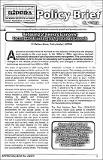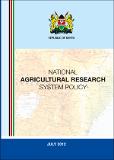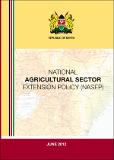Policy Brief No. 03 of 2014 on Rebasing of Kenya's Economy: Factors Contributing to Agricultural Growth
| dc.contributor.author | Muma, Mathew | |
| dc.date.accessioned | 2021-05-04T11:03:32Z | |
| dc.date.available | 2021-05-04T11:03:32Z | |
| dc.date.issued | 2014 | |
| dc.identifier.uri | http://repository.kippra.or.ke/handle/123456789/2895 | |
| dc.description.abstract | Agriculture provides most of the food for the majority of Kenyans and employs most people in the rural areas. In the 1980s to 1990s, agriculture declined substantially because of lack of good economic management. This continued into the 2000s. In 2013, the year for calculating GDP to update production structure, changes in the relative prices of various products, and changes in developments in technology was moved from 2005 to 2009. The share of agriculture in GDP during 2013 has been recalculated to 29.5%, up from 24.0% in 2012. The share of the agricultural sector to the economy is made up of contributions of the value of goods and services from agricultural production, livestock production, forestry, fisheries production and value addition and services in the various areas... | en |
| dc.language.iso | en | en |
| dc.publisher | The Kenya Institute for Public Policy Research and Analysis | en |
| dc.relation.ispartofseries | Policy brief No.03 of 2014; | |
| dc.subject | Agricultural growth | en |
| dc.subject | Employment creation | en |
| dc.subject | Gross Domestic Product | en |
| dc.subject | Agricultural sector | en |
| dc.title | Policy Brief No. 03 of 2014 on Rebasing of Kenya's Economy: Factors Contributing to Agricultural Growth | en |
| dc.type | KIPPRA Publications | en |
Files in this item
This item appears in the following Collection(s)
-
Policy Briefs [336]




